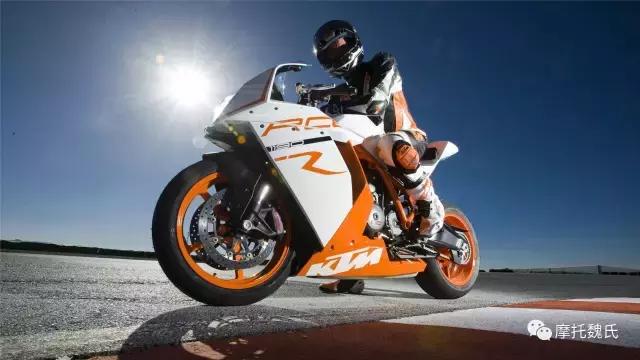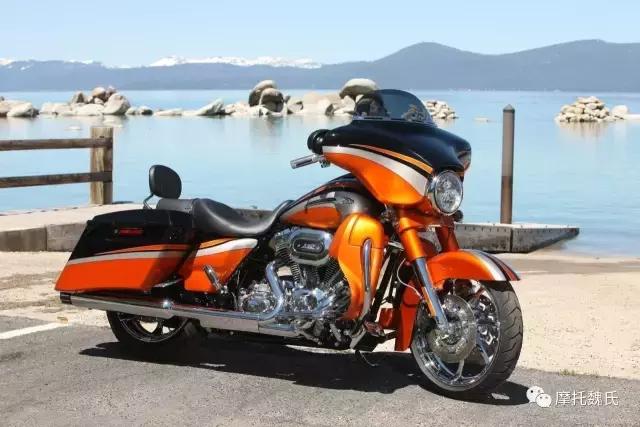
The working cycle of the motorcycle engine is carried out at high temperatures, and the maximum temperature of the combustible mixture can be above 2000 °C. The frictional heat generated by the friction of high-temperature gas and moving parts will increase the temperature of components such as pistons, cylinders and cylinder heads. The high temperature is liable to cause thermal deformation, which reduces the mechanical strength of the engine components, and causes the normal fitting clearance to change due to excessive thermal expansion. Therefore, the motorcycle engine must have a reliable cooling system to ensure the normal operation of the engine. The normal working temperature of the motorcycle engine can not be too low and too high, and the general lubricating oil temperature is about 55 °C. When the temperature of the air-cooled engine oil is about 99 °C, and the water temperature of the water-cooled engine is above 95 °C, the power will drop due to the excessive engine temperature, the acceleration is weak, and the noise is large. Even if the ignition switch is turned off, the engine will not stop. At the same time, the engine cylinder cover and the oil on the cylinder block will be burnt and smoke, and the engine will leak oil, indicating that the engine is not working properly and there is overheating fault.
The overheating of the engine is relatively harmful. The engine power is reduced due to overheating, the acceleration is weak, and the fuel consumption is increased. The engine is not normally burnt due to overheating; the lubricant is degraded and coked due to overheating, and the film between the moving parts is destroyed. The wear is intensified; the crankshaft side rod head bearing is killed due to overheating, the piston ring is broken, the cylinder is pulled, and the cylinder is held, which shortens the engine life and endangers the driving safety of the driver.

More causes of overheating of motorcycle engines
First, new cars and overhaul cars do not pay attention to running-in
Newly purchased motorcycles and overhauled vehicles, due to the rough surface of the parts, there is a certain deviation between the geometrical shape and the assembly position of the parts. The frictional sub-parts show a small contact area, the pressure on the unit contact area is large, and the wear amount increases rapidly. The friction generates a relatively large amount of heat, so care should be taken to maintain and maintain the new car and the overhaul car. During the running-in period, the speed and load must be limited, and the lubricating oil should be maintained and replaced in time. In fact, many new car buyers, especially those who are in the three-wheeled passenger and cargo motorcycles, do not carefully wear and maintain the vehicles according to the requirements in the instruction manual. Some of them drive over the mountains during the running-in period of the new car, overspeed, overtime, overload operation, and do not change the lubricating oil after running for thousands of kilometers during the running-in period, causing the engine to overheat.

Second, improper repair and assembly process
Some motorcycle maintenance personnel use the iron hammer to beat when overhauling the engine. After the two-stroke engine is repeatedly knocked and disassembled, the crankshaft bearing hole is enlarged to cause poor bearing fitting precision, the bearing runs outside the circle, and is incorrectly used in the bearing. The method of repairing the horn and the nest around the outer circumference causes the bearing to be distracted after the crankcase is closed. In addition, the new crankshaft assembly parts that were replaced during the overhaul were of poor quality, and the journals were not more than 0.05 mm. When the left and right crankcases are closed, in the case where the cylinder block, the piston and the piston ring are not installed, the rotation is inflexible when the crankshaft is rotated, and the friction resistance is relatively large, causing the engine to overheat.
Due to the severe wear of the engine crankshaft connecting rod big bearing and the left and right crankshaft bearing installation, the vertical centerline of the crankshaft connecting rod is not in the center of the cylinder after the crankshaft assembly is installed, causing the connecting rod position to be skewed to the left and right and the piston to be yawed in the cylinder. The piston ring and the cylinder are eccentrically ground, and the cylinder pressure is lowered, causing the engine to overheat. The camshaft cam of the four-stroke engine is seriously worn, the cam height is not enough, and the lift of the cam rocker arm to open the exhaust valve is small, so that the exhaust gas is blocked and the exhaust volume is insufficient, causing the engine to overheat.
Third, poor lubrication
Lubricants for four-stroke engines also perform heat dissipation during engine operation. Through the oil pump cycle, the heat absorbed by itself and the heat absorbed by the parts are dissipated through the lubrication cycle, so that the engine components are evenly heated. When the oil pump is damaged, the oil supply is insufficient, the quality of the lubricating oil is poor, and the lubricating oil is deteriorated or the lubricating oil is lacking, the heat transfer and heat dissipation function is weakened, the lubrication state is deteriorated, the oil film is broken between the friction pairs, the wear is intensified, and the engine is overheated.
Fourth, poor heat dissipation conditions
The air-cooled two-wheeled motorcycle, due to unreasonable installation, blocked the frontal cooling airflow of the engine, and the cooling air volume was seriously insufficient, causing the engine to overheat.
Forced air cooling is a better cooling effect in a small displacement motorcycle engine cooling system. Because the cooling fan blade in the forced air cooling device is damaged, the fan is broken and lost, and the air hood is melted and bonded to the cylinder head or the cylinder heat sink by the cylinder block and the cylinder head, resulting in insufficient cooling air flow, low pressure, and wind guiding. The cover cannot properly distribute the wind flow, and the engine casing is affected by the adhesion of the sand splashed by the wheel, which causes the engine to overheat.
A water jacket is arranged around the cylinder in the cold engine, and the water tank is connected to the cylinder water passage. The water jacket is filled with cooling water, and after the engine is warmed up, the cooling water also heats up. In order to maintain temperature balance during operation, the high-temperature cooling water is pumped into the radiator to dissipate part of the heat, and then returned to the cylinder water jacket. In order to prevent steam from being generated due to excessive temperature, a temperature control valve (thermostat) is often provided in the water cooling system. The thermostat's water valve is closed before the engine operating temperature is reached, and the water circulation is limited to a small cycle between the cylinder casing and the thermostat. As the water temperature rises to 71 ° C - 80 ° C, the control valve is gradually opened all the way, and the cooling water is pumped into the radiator to form a large cycle, thereby dissipating more heat. When the temperature rises to the critical point, the thermal switch will automatically open and the electric fan will rotate, which will enhance the heat dissipation effect. When the water-cooled engine thermostat is damaged and the water temperature rises to 82 °C, the control valve will not be opened (or not fully opened), and the cooling water can only be used for small cycles, causing the engine to overheat. When the coolant added to the water-cooled engine is untreated hard water, since the hard water contains a large amount of minerals, scales are easily formed at high temperatures, and the scale makes the water jacket capacity smaller, which also blocks components such as water radiators and affects heat dissipation. , causing the engine to overheat. In addition, due to damage to the radiator, deformation of the radiator and external dirt, water leakage from the inlet and outlet pipes, air removal when the coolant is filled, or damage to the fan motor and the thermal switch, the water temperature rises and the engine is overheated.
Jumping Girth,Saddle Cinch,Horse Belly Guard,Breast Girth Cover
Suixian Zhongyu Electronic Business Co., Ltd. , https://www.sheepskins.pl